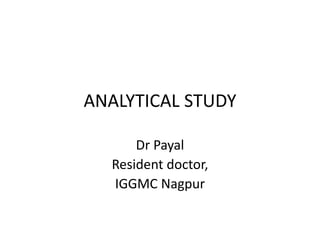The document outlines the essentials of epidemiological studies, including their classification into observational and experimental types. It discusses various study designs such as cross-sectional, case-control, and cohort studies, detailing their methodologies and applications in public health. Additionally, it emphasizes the importance of understanding disease distribution, risk factors, and the effectiveness of health interventions.
































































